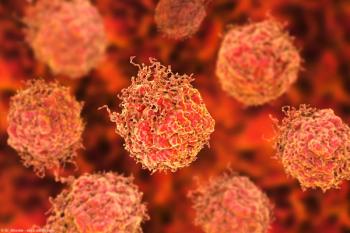
What influences opting out of active surveillance?
A recent study suggests that a man’s race/ethnicity might influence decisions about undergoing treatment and re-biopsies.
A man’s race/ethnicity might influence decision-making regarding opting for active treatment as well as undergoing serial biopsies during active surveillance, according to a recent study published in
Read:
The authors studied a large, ethnically diverse group of men diagnosed with low-risk
They found 27% of the men began active treatment at an average 2.9 years during follow-up. Non-Hispanic African-American men were 30% more likely than non-Hispanic Caucasian men to begin active treatment. Of those who remained on observation, non-Hispanic African-American men were 30% less likely to be re-biopsied within 24 months of diagnosis than non-Hispanic Caucasian men.
Gleason score progression and increasing PSA levels were the primary clinical reasons prompting active treatment in men on active surveillance, independent of race.
Dr. Kelly“Although active surveillance, or watchful waiting, for patients with low-risk prostate cancer has become an increasingly acceptable strategy for disease management, many men opt for definitive therapies, such as radical prostatectomy or radiation therapy,” said co-lead author Scott P. Kelly, PhD, of the Lombardi Comprehensive Cancer Center, Georgetown University Medical Center, Washington.
Also see:
While the results were only marginally significant, they suggest that race may play a role in patients’ decisions to go from active surveillance to an active treatment, which has implications for patient care.
“Our results suggest that non-Hispanic black men may be more likely than non-Hispanic white men to begin active treatment, independent of follow-up clinical triggers, such as Gleason grade progression or PSA doubling time. However, our results also suggest that non-Hispanic black men who remained on active surveillance had lower rates of serial re-biopsies compared to white men, which is important as clinicians may be increasingly hesitant to require men to undergo serial re-biopsies due to complications, yet black men are known to have a greater likelihood of prostate cancer progression,” said Dr. Kelly, who worked on the study with Kathryn L. Taylor, PhD, and co-authors.
Read:
Urologists and others treating these patients should be particularly vigilant in the surveillance of African-American men on active surveillance, as race/ethnicity and sociodemographic factors may influence a man’s decision about whether to end observational management. In addition, clinicians may need to pay more attention to race and ethnicity during follow-up among men who remain on active surveillance, as all men should have similar follow-up monitoring for potential disease progression, such as rates of re-biopsy, regardless of race/ethnicity or socioeconomic status, according to Dr. Kelly.
This study included a large, and more ethnically diverse population, than previous studies, which allowed it to more thoroughly examine the impact of race on prostate cancer treatment decision-making.
“A majority of studies have been performed in non-ethnically diverse populations. We wanted to examine in greater detail whether observational management is underused in minority populations, particularly within the framework of an equal-access health care system,” Dr. Kelly told Urology Times. “Our study had a relatively large number of men from minority populations (31% of our population), and this is one of the few groups studied with sufficient sample sizes to examine whether the associations of clinical triggers for beginning active treatment varied by sociodemographic factors, and if race or ethnicity may play a role in cessation of active surveillance independent of clinical triggers.”
Two previous studies, he said, found African-American men were marginally more likely to switch to an active treatment-a finding that also was observed in this study.
“However, previous studies have also found evidence that suggests black men may be less likely to receive curative treatment prostate cancer than white men, among all risk levels,” he said.
Dr. Kelly added that he and his co-authors agree with an accompanying editorial
More on Prostate Cancer:
To get weekly news from the leading news source for urologists,
Newsletter
Stay current with the latest urology news and practice-changing insights — sign up now for the essential updates every urologist needs.


















